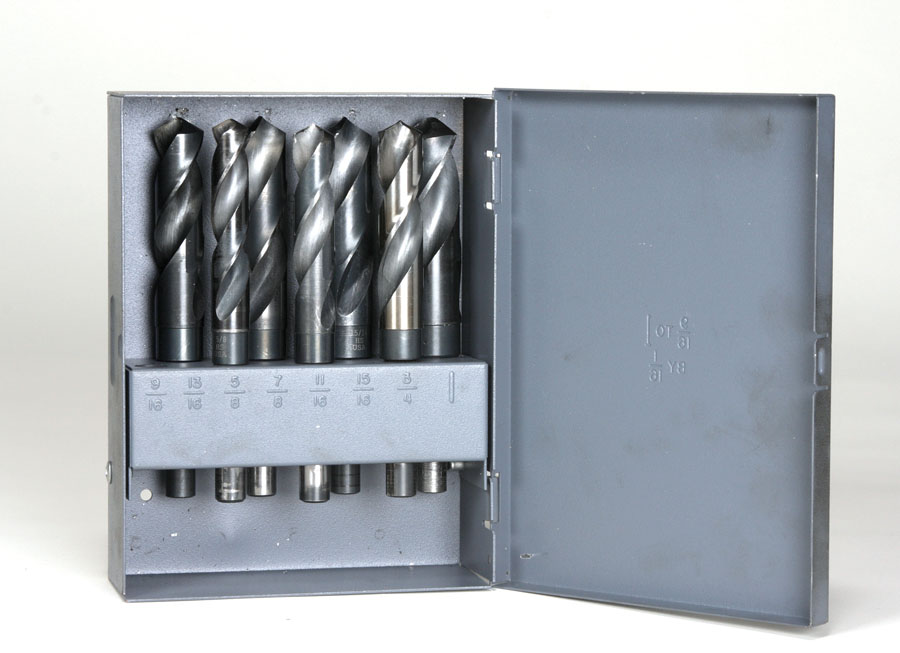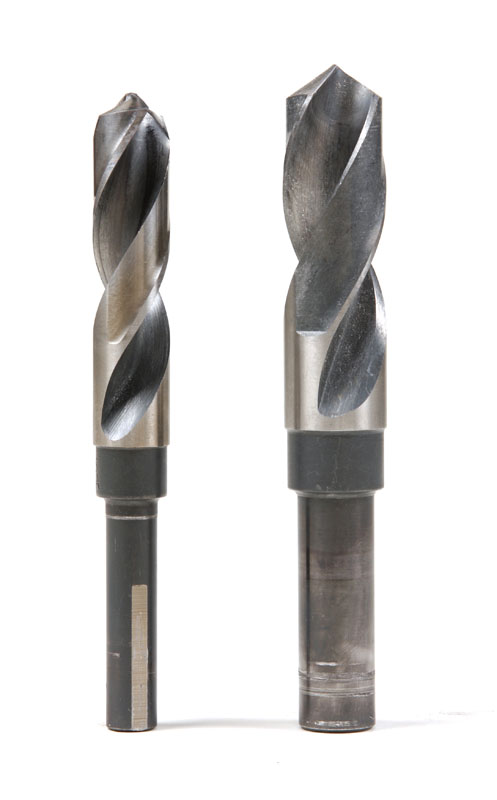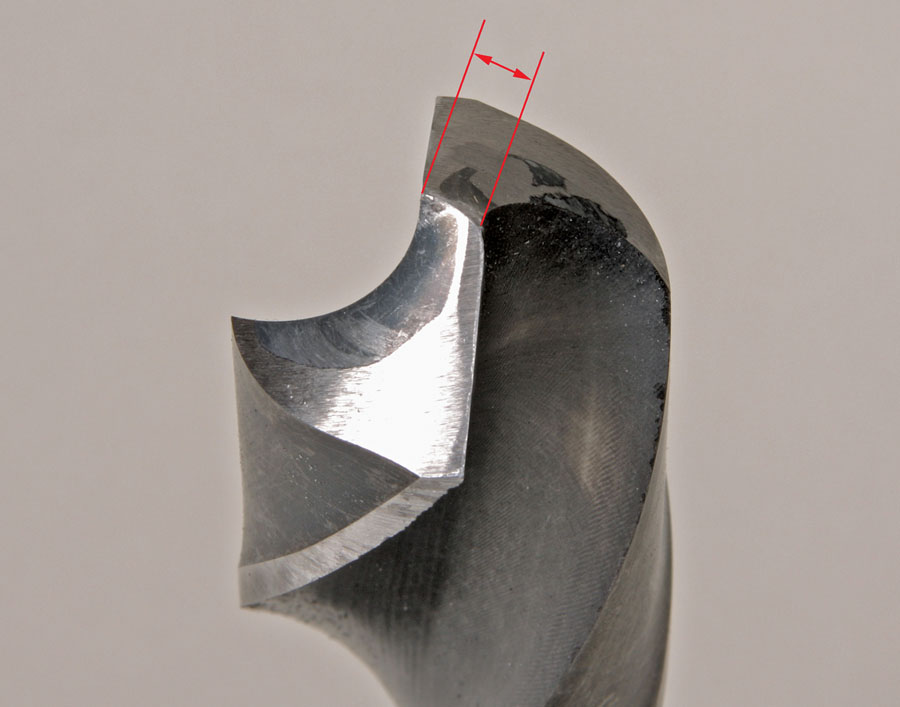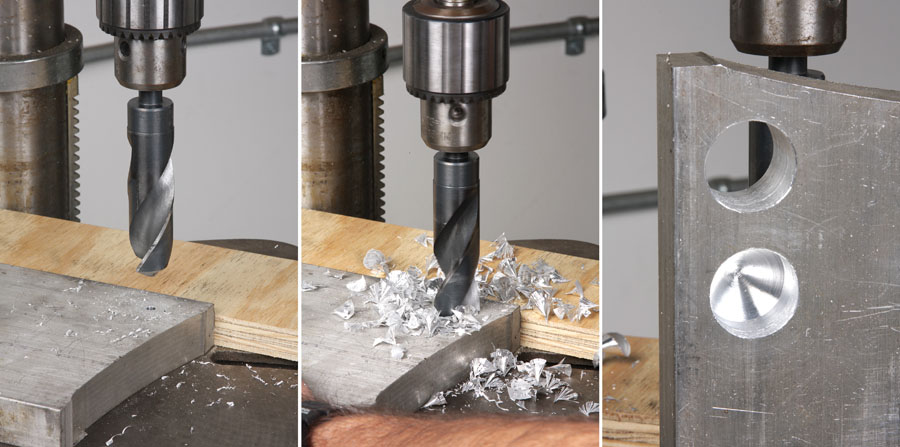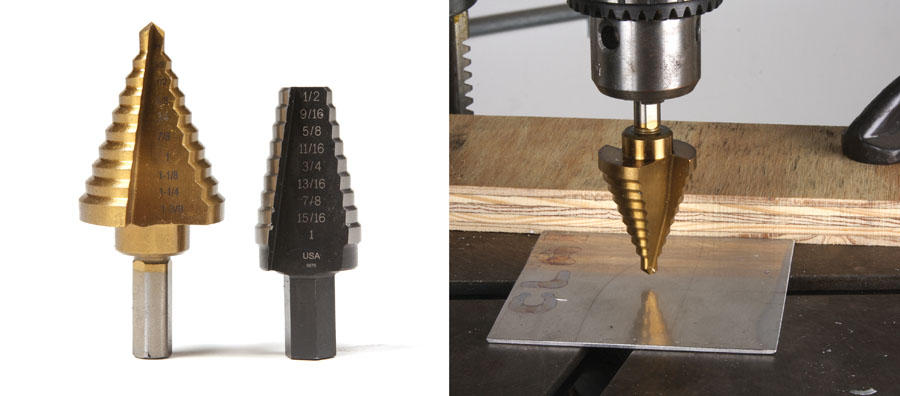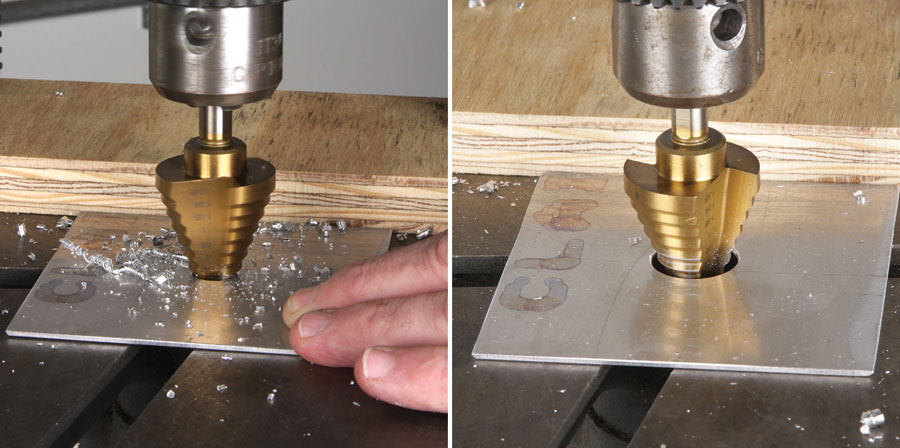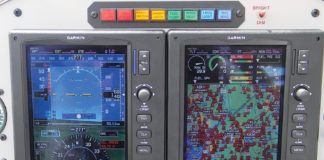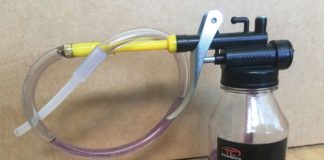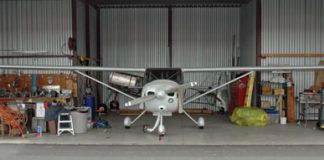Drilling small holes (1/16 inch to 1/2 inch diameter) is a run-of-the-mill task, thanks to inexpensive fractional twist drill sets on sale at home centers and discount tool stores. Odds are, your tool box contains one or more fractional drill sets in 1/32-inch increments or even 1/64-inch increments. If you do any thread tapping, you probably also have a set of letter drills (A to Z/0.234-0.413 inch) and/or number drills (#1 to #80/0.228-0.0135 inch).
It’s not arbitrary that 1/2 inch is the biggest “everyday” drill bit in the fractional set. Drilling holes bigger than inch takes more power than the average hand-drill can muster, and most home shop drills have small chucks that max out at 3/8- or 1/2-inch capacity. That’s what makes Silver & Deming-style drills a good option for the home shop.
Silver & Deming drills are standard twist drills, but with a -inch shank regardless of the drill diameter. They are available in factional sets from 9/16 up to 1-1/2 inches. The 1/2-inch shank allows you to use them in a large hand drill or any drill press machine with a -inch capacity (or larger) chuck. By definition, Silver & Deming drills are always 6 inches long with a 3-inch flute and 3-inch shank. You can buy large diameter drills with a step-down shank that are longer, but they are called reduced-shank drills, not Silver & Deming drills.
Drilling big holes requires both power and torque. Unless absolutely unavoidable, I use a drill press or milling machine for making holes larger than 1/2 inch. Setting the appropriate spindle speed is important, too. A good rule of thumb for steel is 150 rpm for 1-1/2 inch, 200 rpm for 1 inch, 400 rpm for 1/2, 800 for 1/4, 1600 for 1/8, and so on. For aluminum and wood, double those speed recommendations.
Generally, if you own a drill press or milling machine with plenty of horsepower, it’s most efficient to drill the hole in one step after marking the hole location with a center punch or a spotting drill.
For the photos I used a typical home-shop floor-model drill press with a modest 1/2-horsepower motor. It bogged noticeably when drilling a 1-inch diameter hole in 1-inch-thick aluminum plate.
According to the Modern Machine Shop web site, when you drill a hole with a twist drill, about 50% of the power goes into pushing aside the material at the center of the drill (called the chisel point). This suggests that if you make a pilot hole the same size as the width of the web, it should substantially reduce the effort required to drill the hole. I measured the width of the web at the chisel point on the one-inch diameter Silver & Deming drill bit used in the example photos and came up with 3/16-inch for the pilot hole. The result was it took substantially less effort to drill than without the pilot hole.
(Left) Setting up to drill a 1-inch diameter hole in 1-inch thick aluminum. Note the small pilot hole. (Center) The small pilot hole reduces the drilling effort up to 50%. (Right) The hole on top was drilled with the benefit of a small pilot hole. The unfinished hole on the bottom bogged the motor and required significantly more arm strength to drill.
If you have a small benchtop drill press with even less horsepower, you can drill a series of ever-increasing pilot holes before drilling to the final size. However, you must be very careful when doing this because it can, literally, bite you in the shank.
You’ll notice in the photos that, other than a fence to prevent the workpiece from rotating, I don’t have it bolted or clamped down. For most drilling, a fence is adequate to steady a heavy part. The exception is when you’re drilling thin or lightweight parts, or enlarging existing holes. In those cases, the workpiece must absolutely be bolted down or clamped in a vise. Additionally you must feed the bit very slow to prevent the cutting edge from biting into the work and self-feeding. That’s what machinists call a “catch.” If you’ve ever tried drilling Plexiglas or thin sheet metal with a regular twist drill, you know what I’m talking about: either the drill bit snags the material and tries to self-feed into the workpiece, or the part tries to climb up the spinning drill. What’s happening is the catched part is trying to ride up the flutes like a coarse-pitch screw. When a catch occurs in soft material like Plexiglas, you usually just get an oblong hole. Sometimes the shock of the catch can crack the whole piece. That’s why special-grind bits are recommended for drilling Plexiglas. When cutting steel or aluminum, when a catch occurs, it often causes the shank to slip in the drill chuck. Most of us have experienced bits slipping in a drill chuck. The tell-tales are skid marks and blisters of material on the shank. Aside from not being able to put the bit back in the drill index, the bumps can make the drill run out of true. You can salvage a bit by carefully grinding the bumps off, but it’s best to try and avoid the problem by doing things to prevent a catch: clamp the work down, and feed slow and steady.
(Left) They don’t look like much, but step drills do a great job on sheet metal and other thin materials, including plastic. The one on the left makes holes from to 13/8 inches and has a chisel point to make its own pilot hole. The one on the right requires a -inch pilot hole to start. (Right) A fence clamped to the drill press table prevents the workpiece from spinning. Because step drills don’t have a helical flute, they don’t self-feed and aren’t prone to catching the work.
Standard twist drills work fine for drilling large holes in thick material, but when it comes to drilling sheet metal, they generally make a mess of things. Back in the September 2013 issue of KITPLANES, I wrote about annular tooth saw-type cutters for making perfect holes in sheet metal (see: “Quick Mount for a Handheld“). This month I’ll talk about step drills, which come very close to doing as good a job as annular cutters, but at a fraction of the cost.
Once the pilot hole is made, only modest pressure is necessary to drill from one step to the next. For economy and convenience, step drills are the ticket for making clean holes in sheet metal.
Using a step drill is simple enough. Mark your location and drill away! They don’t have a tendency to catch, and provided you don’t overshoot the desired size, they make very clean and round holes. You still need to deburr the edges, particularly the exit side, but that goes for any method of hole making.

